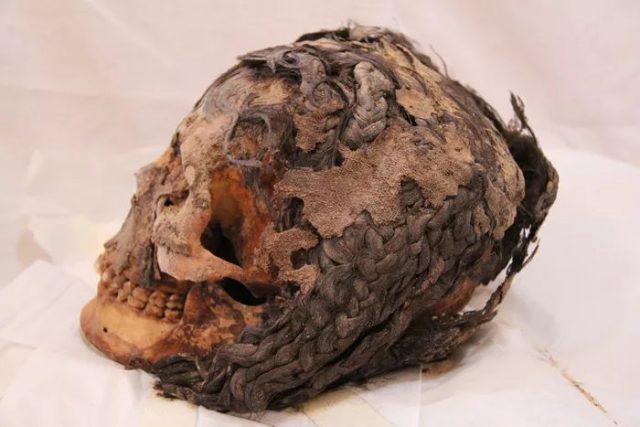3,300-Year-Old Egyptian Hairstyles Revealed They Wore Extensions!

3,300-Year-Old Egyptian Hairstyles Revealed They Wore Extensions!
Egyptian Discovery: Many women nowadays regard their hair as an ornament with which to experiment, altering its appearance, color, and even length depending on the season, their attire, and whether they are feeling informal or serious, or simply in the mood for a change.
Hairstyles are a significant element of a woman’s appearance, just as important as the shoes she wears or the pocketbook she carries.
Even women with short hair may now sport a long, curly style by simply adding extensions to their hair, giving their appearance a whole new aspect.

Most women today believe that extensions (and other cosmetic modifications) are modern inventions, in contrast to their grandmothers’ day when the only option was a bottle of peroxide, and that was only if they wanted to look like a bombshell movie star. Choices were restricted in those days, perhaps 75 years ago, at least when it came to color.
But, as the phrase goes, nothing is truly new on this planet. And the ancient Egyptians, a highly advanced and sophisticated people, demonstrated this over and time again with everything from body preservation procedures to haircuts, colors, and curls.
Thanks to the Egyptians, everything we do now in high-end salons, procedures that hairdressers think are cutting-edge, is 3,300 years old. Many ladies in ancient Egypt used extensions, which celebrities like Kim Kardashian praise as trendy and fun. They were even buried wearing them.
Take, for example, the cemetery in the city of El-Amarna. In 2014, the treasured archaeological site, which has been undergoing study and excavation since 1977, discovered evidence of ladies who wore complicated updos, extensions, and even skull caps thousands of years ago.
Experts sought to replicate exactly what the Egyptian mummified body would have looked like when it was alive — hairstyle intact – after a skull was discovered six years ago with roughly 70 hair extensions still attached.

The current project is being carried out by Cambridge University’s Institute of Archaeological Research, with the cooperation and approval of Egypt’s Ministry of Antiquities.
The hairstyles discovered suggest that ancient Egyptian ladies preferred intricate styles with a range of layers and lengths.
Several Egyptian skulls have been well preserved, allowing archaeologists to acquire a clear, comprehensive image of what fashion trends and colors were popular at the time. Henna was most likely utilized to cover grey hair on one woman’s skull, giving her a richer reddish color and, most likely, a more youthful appearance.
The reasoning underlying the women’s actions may have been timeless and still exist, even though these skulls and remains date back over 3,000 years.
The Amarna Project is continuing to lift the veil on this ancient metropolis, which was abandoned after the pharaoh who created it died.
The site is divided into multiple zones, one of which is known as Central City, and has government buildings, temples, and palaces that were established when the city was first built.
Akhenaten, the Egyptian king, ruled from 1353 to 1335 B.C. The greatest impact on his people, according to historians, was a shift in their religion, which shifted more fully to sun worship.
Amarna was built by these ideals, but after the pharaoh died, inhabitants felt less motivated to stay in this desert metropolis.
The Amarna Project continues to shed light on ancient Egypt’s customs, religious beliefs, and social conventions.
The women with these incredible haircuts are only another piece of the puzzle that reveals so much about Egypt’s past, present, and, perhaps, future.